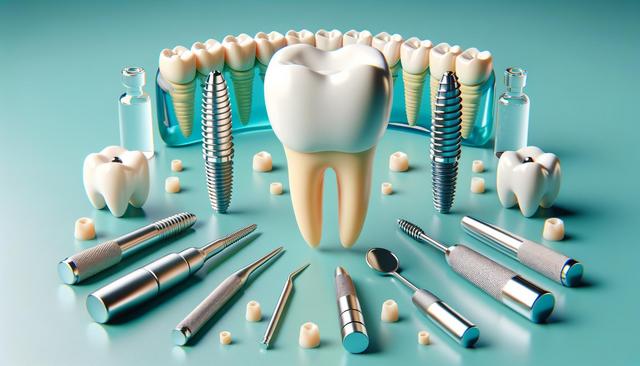Understanding How Screwless Dental Implants Differ from Traditional Types
Screwless dental implants represent a significant evolution in oral rehabilitation. While traditional implants rely on screws to anchor a prosthetic tooth to the jawbone, screwless systems use a press-fit or friction-based mechanism. This difference in design not only impacts the surgical process but also influences the long-term maintenance and aesthetics of the implant.
In conventional implants, the screw acts as a connector between the implant post and the crown. However, screwless versions use a tapered connection or locking system that secures the crown without visible screws. This results in a more natural appearance and eliminates the need for access holes, which are sometimes visible in screw-retained crowns. Understanding how screwless dental implants differ from traditional types helps patients make informed decisions about their oral health solutions.
Additional benefits of the screwless design include:
- Reduced risk of screw loosening over time
- Improved aesthetics due to the absence of screw holes
- Potentially less complex removal and replacement if necessary
These innovations are part of a broader movement toward modern tooth replacement systems that prioritize patient comfort and clinical efficiency.
The Benefits of Screwless Implant Procedures
One of the most notable benefits of screwless implant procedures is the simplified insertion process. Because these systems are designed to lock into place without screws, they may reduce chair time and surgical complexity. Patients often experience less discomfort during and after the procedure, and the healing process can be more straightforward compared to traditional methods.
From a clinical perspective, screwless implants minimize micro-movements between components, which can lead to better long-term outcomes. The press-fit nature of advanced implant technology contributes to a highly stable connection that resists wear and bacterial infiltration. This can lead to fewer complications and a lower chance of inflammation or infection around the implant site.
Here are some prominent advantages:
- Streamlined surgical procedure and shorter recovery
- Enhanced long-term stability and tissue health
- Reduced maintenance due to fewer mechanical components
These benefits align with the goals of long-term oral restoration solutions, making screwless systems a compelling option for many candidates.
What to Expect During Implant Placement
Patients considering screwless implants often wonder about what to expect during implant placement. The procedure follows many of the same steps as traditional implants but may be completed more efficiently thanks to the simplified connection system. Typically, the process involves initial diagnostics, digital imaging, and a treatment plan tailored to the individual’s oral anatomy.
On the day of placement, local anesthesia is administered to ensure comfort. Then, the implant fixture is inserted into the jawbone at the prepared site. Unlike screw-retained systems, the crown in a screwless implant is secured through a precision-fit rather than mechanical fastening. This often results in a cleaner overall finish and fewer follow-up adjustments.
Patients should also be aware of the post-operative care involved:
- Follow all oral hygiene instructions provided by the dental provider
- Attend scheduled check-ups to monitor healing and functionality
- Report any unusual discomfort or swelling promptly
Understanding what to expect during implant placement is essential for a smooth recovery and successful outcome with modern tooth replacement systems.
Modern Tooth Replacement Systems and Their Role in Oral Health
Modern tooth replacement systems, such as screwless dental implants, play a growing role in how dental professionals address missing or damaged teeth. These systems are designed to integrate seamlessly into the mouth’s natural structure, restoring both function and appearance. They also support jawbone health by stimulating bone tissue, much like natural tooth roots.
The use of advanced implant technology allows for greater precision during planning and placement. Digital workflows, including 3D imaging and computer-guided surgery, enhance accuracy and reduce the margin for error. This not only improves the patient experience but also contributes to long-term success rates.
Modern systems often incorporate materials that are biocompatible and durable, such as zirconia or titanium alloys. These materials offer strength while maintaining a natural aesthetic. As a result, patients benefit from solutions that look and feel more like their original teeth.
Key features include:
- Custom-designed prosthetics for a natural fit
- Minimally invasive surgical techniques
- Greater predictability in treatment outcomes
The integration of these features into dental care highlights the value of investing in long-term oral restoration solutions that prioritize both health and quality of life.
Long-Term Oral Restoration Solutions with Screwless Implants
Screwless dental implants are increasingly recognized as part of a broader strategy for long-term oral restoration solutions. Their unique design reduces the number of mechanical components, which can contribute to fewer complications over time. For patients seeking durable and low-maintenance options, screwless implants offer a reliable pathway to restored oral health.
As with any form of dental restoration, ongoing care is crucial. Routine dental visits, proper hygiene, and avoiding excessive force on the implant site help ensure the longevity of the implant. Fortunately, the simplified structure of screwless systems often makes them easier to maintain compared to traditional alternatives.
Other long-term advantages include:
- Lower risk of implant component failure
- Sustained bone support and facial structure preservation
- Improved confidence in speaking and chewing functions
These factors make screwless dental implants a valuable option within the spectrum of modern tooth replacement systems. For patients and providers alike, they offer a forward-thinking approach that aligns with the goals of comfort, function, and aesthetics.
Conclusion: A Contemporary Option for Lasting Dental Rehabilitation
For individuals exploring tooth replacement options, screwless dental implants present a refined alternative with multiple advantages. By understanding how screwless dental implants differ from traditional types and recognizing the benefits of screwless implant procedures, patients are better equipped to make informed choices. The integration of advanced implant technology supports improved outcomes, while the simplified procedure offers a more comfortable experience. As part of modern tooth replacement systems, these implants contribute to long-term oral restoration solutions that enhance quality of life and oral health.




Leave a Reply